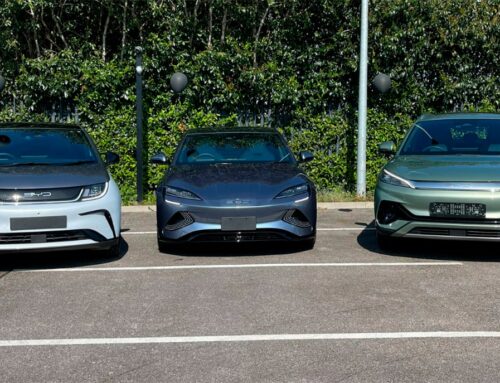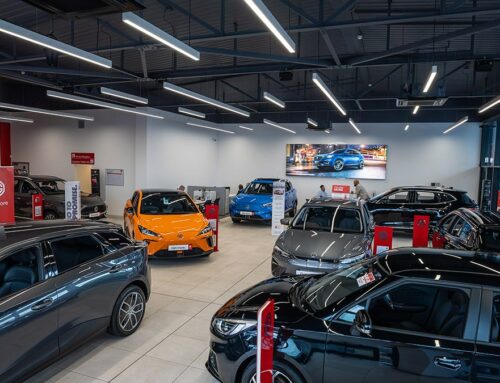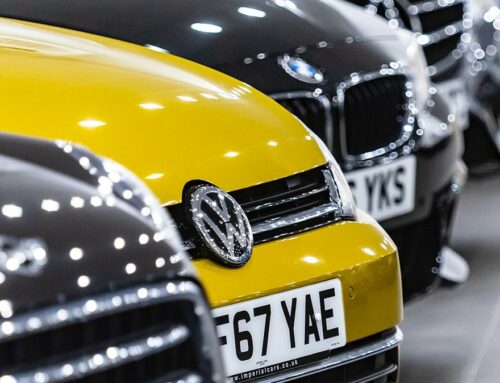THE average price of a used car increased in April for the first time this year, following a succession of monthly dips, according to the latest MOTORS Market View.
Prices averaged £16,964, a month-on-month rise of 1% (or £146), but down 9% year-on-year from £18,564. Despite this downward movement, average prices are still up 8% versus pre-pandemic levels.
The increase was led by franchised dealers and car supermarkets, both seeing rises of 1% to £24,640 and £16,425 respectively. While the average price from independent dealers dipped 1.5% to £12,885. The only rises by age were among two to five year old and five to 10 year old cars, both up 0.3%.
Increases by fuel type were led by electric cars (up 2.5% to £25,905), followed by petrol (up 2% to £16,670) and diesel (up 1% to £15,274). Hybrids dropped 2.5% to £27,765. However, average prices for all fuel types were down YoY. Dealer stock levels increased MoM from 45 to 47 units, putting them on a par with April 2023.
Franchised dealers benefitted from an influx of part-exchanges following the debut of the new 24-plate with inventories growing MoM from 51 to 55 units. Car supermarkets also increased from 207 to 211 units, while independents remained unchanged at 37 units.
With greater volumes of de-fleeted EVs now entering the used car sector, the proportion of fully electric models listed by dealers on MOTORS in April increased 5% MoM and 14% YoY. EVs made up 5% of all dealer stock but just 1% of ad views. Alternatively fuelled vehicles, EVs and hybrids, accounted for 12.4% of dealer stock, the highest level recorded to date.
Lucy Tugby, Marketing Director of MOTORS, said: “Average used car prices have been steadily falling since hitting their post-pandemic peak of £18,927 in January 2023. We’re tracking the market closely to see if April’s rise is an early sign that those monthly declines are halting and whether the market is heading for a period of greater price stability. The cumulative effect of those monthly drops means the average price is now £1,600 below where it was this time last year, so this small rise can be viewed as a correction. Though it is worth noting this is still £1,282 higher than pre-pandemic in February 2020.
“Price drops have certainly opened pockets of opportunity for dealers, as desirable makes and models become more affordable for buyers. In April the Volkswagen Golf overtook the Vauxhall Corsa to become the second best-selling model on MOTORS behind the Ford Fiesta, with the Audi A3 and Mercedes-Benz A Class also performing strongly.
“Dealers who stay on top of data and trends will be able to benefit from the opportunities that inevitably arise in the market,” said Tugby.
The overall price comparison with ICE cars is interesting; in stock for an average of 59 days, with an average dealer purchase price of £14,451, the overall car parc is older and cheaper. However, there are signs that price parity between EVs and ICE cars is emerging on an age like-for-like basis.
Chris Rowthorn, Director of Motor Sales Operations at MotoNovo, said: “In the face of increasing new EV supply, growing price competition and the pressure created by the government’s Zero Emission Vehicle (ZEV ) targets, there is the potential for used EV values to decline, making them more affordable in the future. Factor in the fact that EVs have fewer mechanical parts to go wrong and that with a home charger, they are typically cheaper to run than an ICE car, and the potential for increased demand for EVs is evident.”
In terms of affordability, based on overall averages, ICE cars are cheaper than BEVs. However, this average price differential between ICE and BEV cars can be attributed to the broader age range of ICE cars, with the used BEV market yet to reach a similar maturity. Within this, ICE cars remain impacted by the post-COVID semiconductor shortage.
The traditional demand for cars in the 3-6 age category remains valid, but availability remains constrained. The inevitable consequence has been increased stocking of cars in the 6-9 age range. Looking ahead, Chris expects the trend towards an ageing car parc to ease, reflecting,
Rowthorne added: “A little over 40% of stock purchased and settled in the last quarter came from the 3-6 age range. It was a percentage almost matched by cars in the 6-9-year-old segment. While we expect the average age to start declining slowly as supply improves and as the broader economy and disposable income levels improve, consumers may well remain ‘bruised’ by the impact of cost-of-living increases. It will be interesting to see how as consumers look to change the running cost affordability and increasing supply and, with it, potentially lower purchase costs impact decision making. We will be watching this very closely.”







Leave A Comment